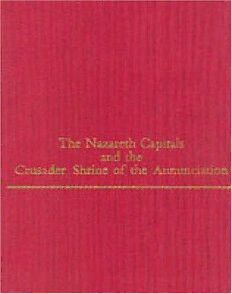
The Nazareth Capitals and the Crusader Shrine of the Annunciation PDF
164 Pages·1986·86.437 MB·English
Most books are stored in the elastic cloud where traffic is expensive. For this reason, we have a limit on daily download.
Preview The Nazareth Capitals and the Crusader Shrine of the Annunciation
Description:
The Nazareth capitals are the most important and finest figural sculptures to have survived from the Crusader States between 1099 and 1291. Excavated in 1908, these capitals have long been known, but never fully discussed in terms of function, form, and meaning. This book aims to restudy systematically the five famous capitals so as to explain their intended function, their iconographic program, and the character of their remarkable style; to examine the historical and archaeological aspects of the holy site of the Annunciation and the cult of the Virgin Mary at this unique place; and to understand the capitals as masterpieces of late 12th-century Crusader art in terms of their special regional characteristics between East and West - that is, between the medieval Latin West and the Byzantine East - and as major examples of 12th-century medieval stone sculptures.Using archaeological and historical evidence, Dr. Folda argues that the capitals were planned and completely carved, but never put in place in the Church of the Annunciation. He then evaluates the pilgrims' accounts of the site far which the capitals were apparently carved, the ShrineMonument of the Annunciation, and scrutinizes the archaeological and historical evidence about this site. Dr. Folda speculates on the basic features of the Crusader Shrine-Monument of the Annunciation which was apparently never built. He examines textual material ranging from early Christian times to the 15th-century story of the Holy House of Loreto to help explain the enigmatic scenes of the five capitals. And he concludes with a re-examination of the extraordinary stylistic character of the capitals and the problems involved in their dating.
See more
The list of books you might like
Most books are stored in the elastic cloud where traffic is expensive. For this reason, we have a limit on daily download.
